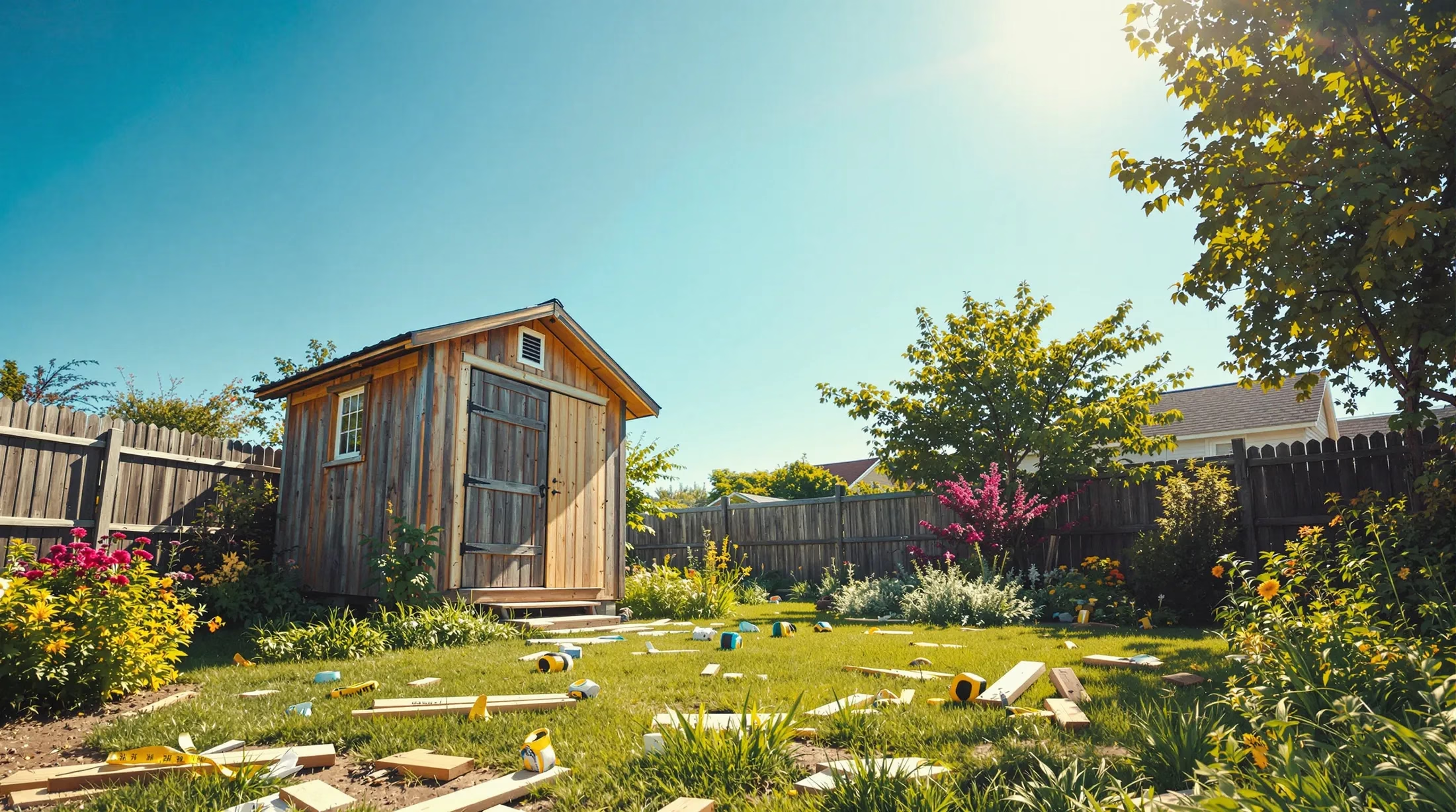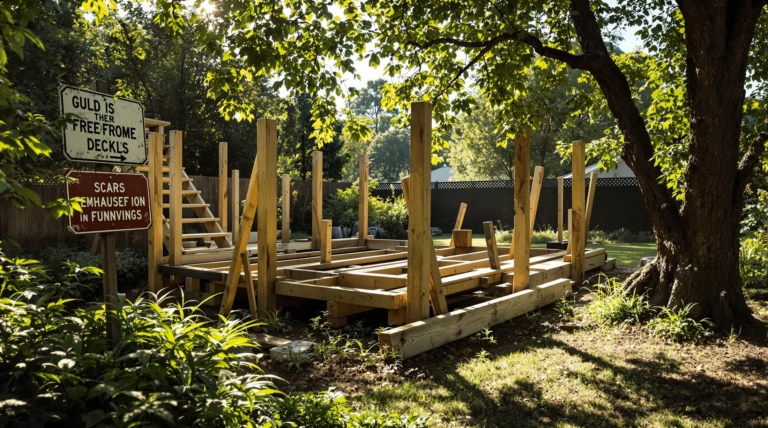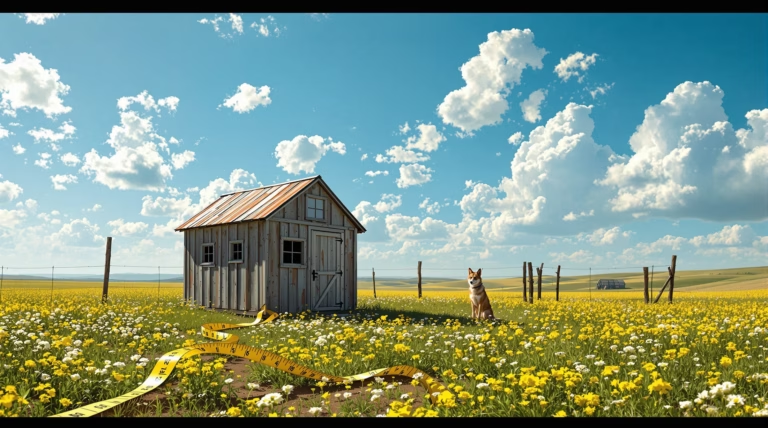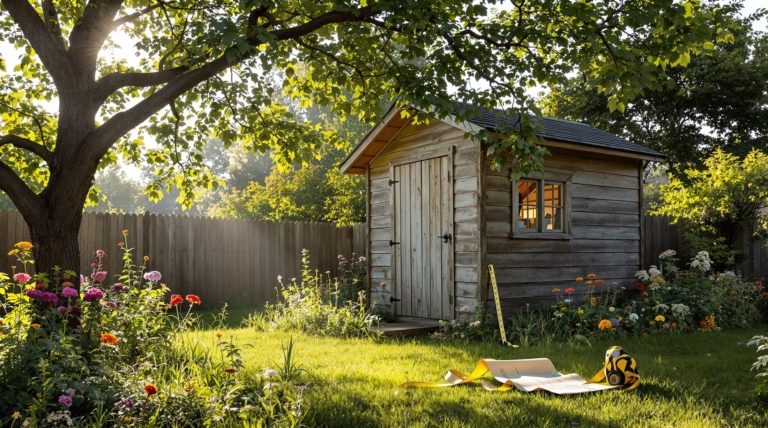How Big of a Shed Can I Build Without a Permit in California?
Planning to build a storage shed in California? Before you start your construction project, it’s essential to understand the state’s building regulations and permit requirements. Let’s explore what you need to know about building permit-free sheds in the Golden State.
Understanding California Shed Building Regulations
Building a shed in California requires careful consideration of state and local regulations. While California provides general guidelines, specific requirements vary significantly by location. Most jurisdictions allow sheds under 120 square feet to be built without a building permit, including areas like Placer County and Santa Clarita in Los Angeles County. Notably, eave overhangs don’t count toward the total square footage calculation.
Overview of California Building Codes for Sheds
The California Building Standards Code (Title 24) establishes minimum construction requirements for sheds. While the 120-square-foot threshold is common statewide, some areas like Hollister maintain a lower limit of 100 square feet.
- Maintain proper setbacks from property lines
- Adhere to height restrictions (typically 12 feet maximum)
- Ensure the structure isn’t used for habitation
- Keep the shed detached from other structures
- Obtain separate permits for electrical, plumbing, or mechanical systems
Zoning Laws and Their Impact on Shed Construction
Zoning regulations vary significantly between urban, suburban, and rural areas. Each municipality establishes specific requirements for shed placement and construction. In residential areas, sheds are typically restricted to backyards or side yards. Properties with Homeowners Associations (HOAs) may face additional guidelines regarding appearance, materials, and color schemes.
How Big of a Shed Can I Build Without a Permit in California?
Most California jurisdictions allow construction of sheds up to 120 square feet without a building permit. This means you can build a 10’x12′ shed or any configuration within this limit without formal permitting. However, local ordinances may modify this standard, and compliance with setback requirements and height restrictions remains mandatory.
Maximum Shed Size Without a Permit
The standard 120-square-foot threshold (10’x12′) applies across most of California. When measuring, use exterior dimensions at floor level. Roof overhangs and eaves typically don’t count toward the maximum in many jurisdictions, offering greater design flexibility.
| Location | Maximum Permit-Free Size |
|---|---|
| Most California jurisdictions | 120 square feet |
| Hollister (San Benito County) | 100 square feet |
Exceptions and Special Cases
Even with permit-exempt sizes, certain factors may trigger permit requirements:
- Installation of electrical, plumbing, or mechanical systems
- Non-storage uses (workshops, offices, living spaces)
- Properties in coastal zones, fire hazard areas, or flood plains
- Historic district locations
- Planning or zoning permit requirements
Steps to Ensure Compliance with California Shed Regulations
Success in building a compliant shed requires careful planning and research. While the 120-square-foot rule is common, regulations vary significantly between jurisdictions. Consider factors like zoning classification, environmental designations, and HOA restrictions when planning your project. Creating a location-specific compliance checklist will help ensure all requirements are met before construction begins.
Steps to Ensure Compliance with California Shed Regulations
Consulting Local Authorities
The most reliable approach to understanding shed permit requirements is direct consultation with your local building department or planning commission. While the 120 square foot threshold is common throughout California, some areas like Hollister enforce a stricter 100 square foot limit, making local verification essential.
- Bring specific details about your proposed shed (dimensions, use, location)
- Inquire about planning permits, even if building permits aren’t required
- Ask about special considerations for your area (fire zones, flood regions)
- Document all received guidance and official names
- Verify setback requirements and size limitations
Documentation and Approval Process
Proper documentation is crucial for both permit-exempt and permitted sheds. Create a comprehensive site plan showing:
- Property boundaries and existing structures
- Proposed shed location with setback measurements
- Shed dimensions and specifications
- Pre-construction site photographs
- Compliance verification with local regulations
For sheds requiring permits, the approval process typically involves submitting application forms, construction plans, and fees. Approval timelines vary by jurisdiction, from immediate over-the-counter permits to several weeks of review. Maintain copies of all submissions, correspondence, and approvals throughout the process. This documentation proves invaluable when selling property or addressing future questions about the structure’s legality.
Consequences of Non-Compliance with Shed Regulations
Disregarding California’s shed regulations can result in significant consequences for property owners. When authorities discover unpermitted structures, they typically issue violation notices requiring immediate action. Options may range from retroactive permitting with additional fees to mandatory modifications or complete removal. These issues frequently surface during home inspections and can complicate or prevent property sales.
Fines and Penalties
| Violation Type | Typical Cost Range |
|---|---|
| Initial fine | $100-$500 |
| Retroactive permits | 2-3x standard permit fees |
| Professional services | $1,000+ for drawings/reports |
| Modification costs | Several thousand dollars |
Legal Implications
- Code violations become attached to property records
- Insurance coverage may be limited or voided for unpermitted structures
- Potential civil litigation from neighbor disputes
- Complications with property value and future sales
- Risk of damage liability without insurance protection
Non-compliant structures can lead to insurance complications, particularly if damage occurs during natural disasters. Additionally, neighbor disputes over unpermitted sheds can escalate into civil litigation, especially regarding setback violations or aesthetic issues. These combined factors make regulatory compliance a crucial consideration for any shed project.







